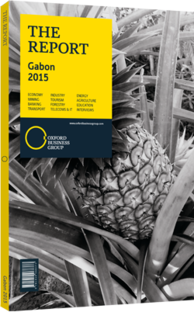Pierre Moussa, President, CEMAC Commission, on the solutions for and challenges to regional development

CEMAC countries have to face major challenges with regards to their economic and political situations. On the security side, the political upheaval in the Central African Republic and the development of terrorism along CEMAC borders, notably from Boko Haram, is threatening the entire region and, consequently, the capacity to attract investment.
On the economic side, almost all CEMAC countries are oil producers. With the sharp drop in oil prices since 2014, budget revenues have been cut by 50%. This income reduction puts negative pressure on public spending and investment programmes dedicated to economic development, and it makes it more difficult to preserve social gains. The economic growth in the whole sub-region is expected to slow down, which compels CEMAC countries to adjust their social and economic objectives.
The projected reductions in these investment programmes will have consequences on the employment rate, especially among the youth. An assessment of efforts toward the UN’s Millennium Development Goals will be conducted in 2015. Most of the objectives will not be achieved by CEMAC countries, in spite of some successes. All these elements showcase the challenges facing CEMAC countries.
However, while the economic growth in the sub-region seems threatened, it is important to recall a study by the International Development Studies and Research Foundation that highlighted the reinforcement that regional integration provides for member countries, enabling them to generate an extra 2-3% of GDP growth and insulating them from external shocks. There is therefore no alternative to integration. Integration is an historical necessity and a condition for development in a context of globalisation where regional blocks exercise influence.
CEMAC was created 20 years ago in a bid to create a strong common space, territorially interconnected and economically unified, in compliance with the process of African development. In that spirit, many things have been achieved. Important reforms have been carried out with the support of CEMAC’s Conference of Heads of States. The monetary union is one of its main achievements. With regards to economic integration, the free-trade zone and the Customs union are already a reality, enabling CEMAC to be a space of free movement of goods, services, people and capital. The common market is also under way and four countries are involved.
The definition of common, sector-specific policies in agriculture, transport and health have paved the way to the construction of an economic union. These achievements should now extend to other areas. The Regional Economic Programme (REP) adopted five years ago represents the very foundation of our collective vision of development and new institutions have been put in place to further support the integration programmes. The efforts geared towards the reinforcement of regional integration will enable a stronger convergence of CEMAC economies and the achievement of a financial integration, which will help foster the development of capital markets and give them the financial capability to fund major projects within the scope of the REP.
However, the REP must be reviewed and adjusted in line with national development plans. We will only consolidate the region by putting an end to Customs union dysfunctions, extending the free movement of people to all CEMAC countries and pursuing the development of common, sector-oriented development strategies. This can only be made possible within a secure and peaceful space. Our fight against terrorism has to be the cornerstone of integration. Our priorities include security in the sub-region, support for CEMAC institutions in Bangui, the free movement of people, the negotiations for the Economic Partnership Agreement with the EU, financing of development and the protection of environment.
You have reached the limit of premium articles you can view for free.
Choose from the options below to purchase print or digital editions of our Reports. You can also purchase a website subscription giving you unlimited access to all of our Reports online for 12 months.
If you have already purchased this Report or have a website subscription, please login to continue.

